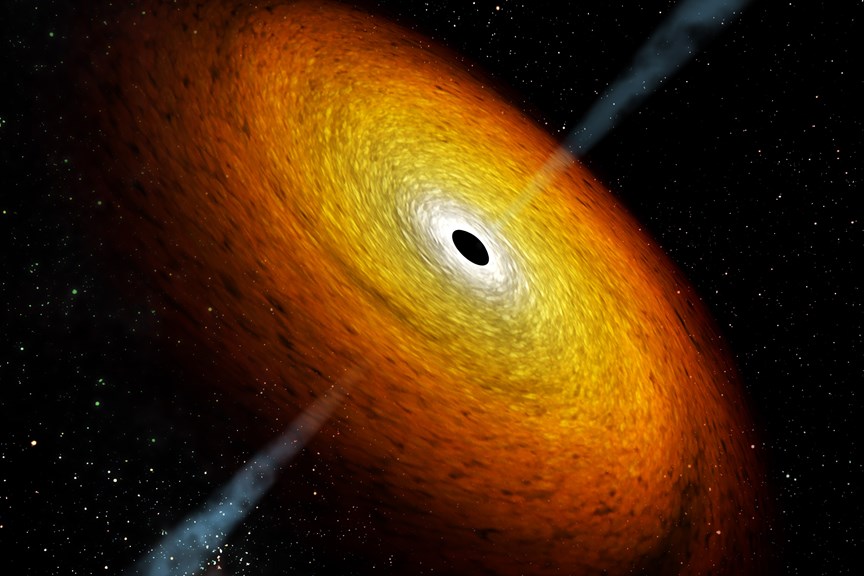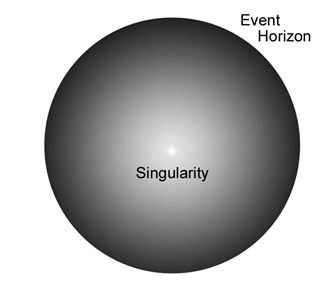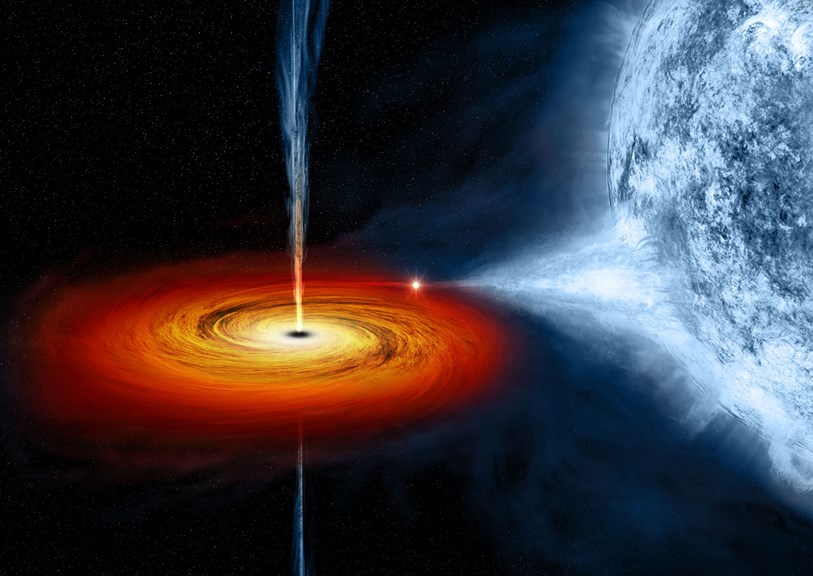Black Holes
Journey into the unknown
Narrated by Academy Award winner Geoffrey Rush and presenting the latest science, this planetarium show brings to life all that is fascinating and extreme in the world of black holes. Want to know more? Here are the answers to some favourite questions about Black Holes.
How many black holes are there?
We know of two types of black holes: Stellar Black Holes and Supermassive Black Holes.
Stellar Black Holes are created when massive stars die. They end their lives in violent supernova explosions – most of the star’s matter is blown away leaving behind a stellar core. If the core has enough mass it will succumb to gravity and collapse in on itself to become a black hole. It is likely that our Milky Way Galaxy contains around 10 million black holes but we will probably only ever ‘see’ about 1,000 of these. Astronomers have been able to track down over 20 stellar black holes so far.
Supermassive Black Holes earn their name because they contain over a billion times more mass than the Sun. It is not yet known how they are created but it seems that they lie at the centre of almost every galaxy in the Universe, including our own Milky Way Galaxy.
What does a black hole look like?
Black holes are really very simple as they have just two main parts – the Event Horizon and the Singularity.
The Event Horizon is the outer limit of the black hole. It is the closest thing a black hole has to a surface, but it’s not a physical surface – it’s an invisible bubble in space. The event horizon is the point of no return. Nothing can escape a black hole once it crosses the event horizon and we can never see what happens inside it. However, using maths we can get an idea of what it might be like.
The Singularity lies right at the heart of the black hole. It is in this tiny spot that the entire mass of the black hole is contained. Anything that falls into the black hole is eventually crushed onto the singularity. How a black hole can pack such huge amounts of matter into such a tiny space is a mystery. To fully understand the singularity, scientists will need to combine two famous theories of the Universe: the General Theory of Relativity (that explains the very large) and Quantum Theory (that explains the very small).
The greater the mass hidden inside the singularity, the larger the event horizon. A Stellar Black Hole with the mass of five suns, has an event horizon around 30 km wide, about the size of Ballarat. Supermassive Black Holes, with a billion times the mass of the Sun, have event horizons that are three billion km wide or about as large as the orbit of Uranus.
Why is a black hole 'black'?
The gravity at a black hole’s event horizon is so strong that light cannot escape its pull. And with no light escaping, a black hole isn’t just black, it’s not even visible.
Why is a black hole a 'hole'?
Einstein says that nothing can travel faster than light. So if light cannot escape a black hole, then nothing else can either; it is a hole in space. (Recently some scientists, including Stephen Hawking, suggested that there may be a way for information to get out of a black hole. Stay tuned for more!)
If a black hole is invisible then how do you see one?
The easiest way to find a black hole is to watch something fall into it. Just as water spirals around a plug hole, gas and dust falling into a black hole circles around – forming an Accretion Disk – before disappearing across the event horizon. The gas in the accretion disk moves so quickly, and gets so hot, that it gives off X-rays, which can be detected by space telescopes.
The first stellar black hole, called Cygnus X-1, was found in 1971. It is in orbit around a star and is pulling gas away from that star (like in the picture). The gas spirals down towards the black hole, forming a bright accretion disk. X-ray telescopes orbiting the Earth see this as a bright X-ray glow in the sky.
The first supermassive black holes to be discovered are called quasars. In the early 1960’s the Parkes Radio Telescope played a key role in showing that quasars are the unusually bright cores of a very distant galaxies, lying billions of light years away. Quasars are incredibly bright because of their hot, gigantic accretion discs.
Even if a stellar black hole doesn’t have an accretion disc, astronomers have recently found a new way to find them. When an “invisible” black hole passes in front of a distant star, its strong gravity bends the light from the star, shining it towards Earth. The star temporarily brightens, as the black hole moves by. Many black holes were discovered in this way using the telescopes at Mt Stromlo, Canberra (before the bushfire of 2003).
What would happen if I watched someone fall into a black hole?
A black hole’s immense gravity slows down time. If you were to watch someone fall into a black hole, and say you could listen to their heart beat, you would hear it slow down as they neared the black hole. In fact, you would never see your friend fall into the black hole; they would be continually moving towards it but forever slowing down. Eventually they would be moving so slowly it would seem as if they were frozen in time. Sadly, your friend would ultimately disappear because the black hole’s gravity makes it increasingly hard for their light to escape. So rather than falling through, they would simply fade away.
What would happen if I fell into a black hole?
If you fell towards a black hole, time would seem to flow as normal but everything around you would speed up. If your journey was long enough, you might see the whole future of the Universe racing by. What’s more, the black hole’s gravity would curve space so strongly that you could see objects that in reality lie behind you.
Imagine you were falling feet first, then your feet would feel more gravity than your head. You would be stretched out in a process called spagettification. For the best chance of surviving a fall into a black hole, you’d be wise to choose a supermassive one; the more mass, the gentler the change in gravity. You’d survive for longer because spagettification occurs more slowly. Unfortunately, no matter what kind of black hole you fall into you will most likely be crushed once you reach the singularity.
Related links


